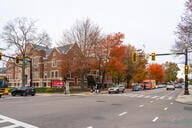You have /5 articles left.
Sign up for a free account or log in.
My thanks to the many wise and worldly readers who responded to my question about the criteria that colleges will use in determining how/whether to return to campus this fall.
Common criteria that folks suggested included:
- Local virus prevalence
- Local transmission rate
- CDC recommendations
- State recommendations (or, obviously, mandates)
- Vaccination availability
- Vaccination rates
- Testing positivity rates
Those all seem pretty reasonable. I was struck that almost none of the plans that people sent -- and again, I’m floored by the generosity of readers in sharing entire plans -- mentioned specific numbers or cutoffs. A plan might mention, say, the local transmission rate, but none of them set thresholds.
That might seem to fly in the face of transparency, but I think it’s actually honest. A single number, out of context, could be misleading. And while it’s entirely fair to ask college leaders to incorporate relevant data into these decisions, there’s an inherent unknowability at the core of it. We don’t know what the state of immunity will be in five months. Right now, we can’t know.
The plan from UC Santa Cruz specifically mentioned the need for flexibility as a guiding principle in planning. That makes a lot of sense. It’s easier to switch from in-person to remote than the other way around, because the other way would require selecting classrooms. Worse, from a student perspective, the other way would suddenly impose transportation requirements that might be prohibitive. For the most part, a student who could come to an in-person class could attend online; the reverse is less obvious. (Of course, this assumes ubiquitous internet access. That isn’t always true in some low-income and/or rural areas.) So if flexibility is key, it’s probably better to plan for a robust in-person return.
Publishing guidelines without numerical thresholds highlights the distinction between transparency and certainty. When the underlying situation is fluid, transparency means conveying that uncertainty. That frustrates people who just want the answer now. But any answer given now is necessarily speculative at best.
In conversations, I’m picking up that many people are balancing roughly equal parts eagerness to return with fear of returning. It’s like flooring the accelerator and the brake at the same time; you wind up with a lot of jerkiness, but little forward motion. Sometimes we just have to make peace with uncertainty and do the best we can anyway. And the task of college leadership is, in part, to set a climate in which that kind of uncertainty is less scary than it would otherwise be.
Thanks again to everyone who responded to the call. We’ll get through this. It’s what we do.



